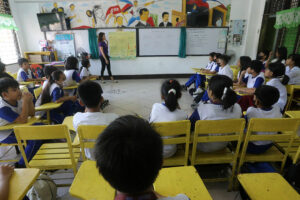The current teacher shortage nationwide is approximately 65,000, far from the Department of Education’s (DepEd) record of around 30,000, a nonprofit organization claimed on Friday.
“We think that we need more than 100,000 teachers in 2024,” Teachers Dignity Coalition National Chairman Benjo Basas told BusinessWorld in an interview. “If we decrease the 36,000 (teaching positions), the current shortage would be around 65,000.”
In 2024, the Department of Education (DepEd) reported a shortage of approximately 60,000 teachers. In response, the Department of Budget and Management (DBM) approved the creation of 22,000 new teaching positions in May of that year.
By May 2025, the DBM authorized the establishment of 16,000 additional posts, part of a broader plan to introduce 20,000 new teaching positions for the year.
“We think it’s conservative,” said Mr. Basas. “It’s not aligned with what’s happening on the ground.”
He also noted that although the government hires new teachers every year, it must also take into account the number of educators leaving the profession.
“People also retire every year, some resign for greener pastures, and some take early retirement because they can no longer handle the pressure or for other valid reasons.”
Demand for teachers
Education Secretary Juan Edgardo “Sonny” M. Angara said the classroom shortage of over 165,000, especially in urban areas such as Region IV-A and the National Capital Region (NCR), is caused by the growing population.
Due to the increasing number of young population or school-age children and the unequal distribution of students in urban and rural areas, the demand for teachers increases as well, according to Mr. Basas.
“(Schools in) rural areas are not crowded, it’s not congested, unlike in urban areas, where the student population is bigger,” he said. “Kinder to Grade 3 has the highest attendance which means, more teachers are needed, especially in key stage 1 (KS1).”
“I’m assuming that the DepEd based the numbers on a 1:40 teacher-to-student ratio, which should not be the case if you look at it per grade level,” he added.
KS1 learners typically range from five to eight years old. Data from the local statistics agency showed that out of 42 million, around 11 million people aged five to nine had attended school in 2020.
Classes for the upcoming school year will commence on June 16 and end on March 31, 2026. – Almira Louise S. Martinez


















